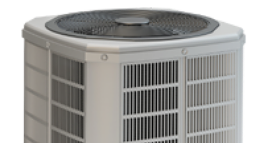As a real estate professional, what do you and your buyer/seller need to know and do prior to an inspection?
Many states require an inspection for any new home purchase. As a real estate professional, what do you and your buyer/seller need to know and do prior to this inspection? There are certainly specific checklists you can use. But as long as all parties in a home sale transaction understand their roles and the purposes of a home inspection, all should go smoothly.
What is a home inspection?
A home inspection is a visual examination of a structure made by a trained and qualified home inspector who has experience evaluating the fundamental features in a house. A home inspection can give a clear and accurate report on the condition of these components. A home inspection is visual in nature and should not involve invasive digging, drilling or deconstruction.
What are the goals of a home inspection?
There are two primary goals of a home inspection. First, the initial goal is to clearly identify any significant potential or existing defect that might affect a buyer’s decision to purchase and offer a realistic estimate of repair costs. Secondly, the home inspector will clearly identify any areas in need of immediate repairs or any mechanical or physical components that are reaching the end of their realistic life span. This secondary goal provides information that is useful in establishing a maintenance budget.
Consider a pre-inspection
Depending on the age and physical condition of the home in question, sellers or real estate professionals may want to schedule an inspection before the home is placed on the market. New homes with no obvious faults can probably skip this step. If there are any legitimate concerns about defects or other issues that could derail a sale, it’s probably worth it to dole out a few hundred dollars to hire a home inspector. This allows the seller and their agent to address potential problems on a realistic schedule, rather than when under pressure from a buyer who is demanding that work is completed before closing.
Prepare for the inspection
A home inspector who arrives at a clean home where the seller and their agent are prepared is far more likely to overlook minor problems. To be prepared, complete the following steps before the inspector arrives.
- Removing clutter helps the home inspector work faster. Remove clutter from beneath bathroom and kitchen sinks and any area that might obstruct the water heater or other primary mechanical components.
- Create a file that documents all maintenance and repairs that have been performed on the home. This will expedite the inspector’s work.
- Provide complete access by unlocking gates and doors and giving access to sheds, garages or other unusual areas like basements, attics or storage spaces.
- Leave home so that the inspector can work without interruption. Just like real estate agents, inspectors find it easier to do their job without the presence of the homeowners.
- Clean the house to leave the impression that the seller takes care of their property, leading to a reduced risk of finding major problems.
- Leave the lights on and make sure all the lights work, especially in basements or storage spaces that might be dark.
Remember to always utilize a home inspection; a quality home inspection is designed to provide buyers with better information on the value of their home and help sellers make a more informed decision about their potential purchase.
While a home inspection is designed to find potential systems and appliances defects, it does not protect against the future costs of repairs or replacements of systems and appliances. To invest in your property and protect yourself from unexpected repair and replacement costs, purchase a 2-10 Home Buyers Warranty Service Agreement. Learn more here.
2-10 HBW offers comprehensive systems and appliances home warranties to help protect your clients from unexpected repair and replacement costs. Contact us to learn more.
Related content
Should Buyers Waive Home Inspections as a Buying Strategy?








